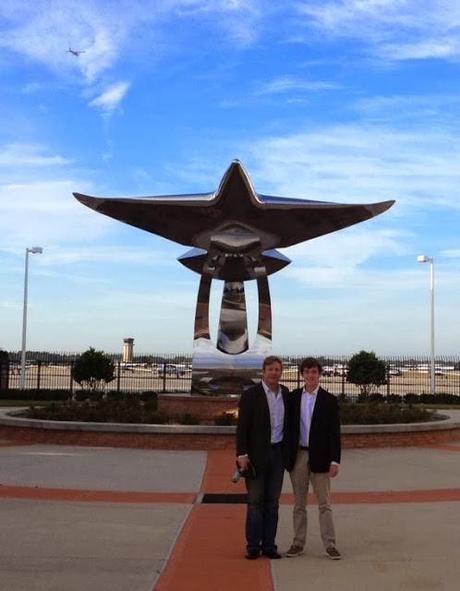I took the opportunity a week ago to visit Embry-Riddle Aeronautical University, Daytona Beach, Florida. My two day visit is broken into three separate articles:
Day One (College of Business and Campus Tour), Day Two (College of Aviation), and Observation Flight/Flight Programs. In each article, I will try to summarize the programs and degrees I learned about, in addition to some things I found surprising about the school.Embry-Riddle introduction video (*note, this is for the Prescott Campus):
-------------------------------------
When many people think about Embry-Riddle, they think of a flight school, or, as my friends have dubbed it, "sky college." What many don't realize is that ERAU is just like any other 4 year school. While it is an aviation-centered school, degrees range from Aeronautical Science, Business, Air Traffic Control, and Engineering, to Space Physics, Engineering, and beyond. One thing I failed to mention in my first article is what the general feel of ERAU is on campus. It's a relatively large private school, with around 5,500 students. Since it's aviation based, there is a special understanding people have of each other, that would be impossible to replicate at any other school. At the Starbucks on campus, I heard nearly all of the students having conversations about their flight experiences, etc. In this part-two article, information is going to be centered on the College of Aviation.
Information from the ERAU website:
"The College of Aviation (COA) is housed in six buildings located on the western edge of the campus near the flight line. These buildings are: (1) College of Aviation building, (2) Advanced Simulation Center, (3) Flight Operations Center, (4) Sam Goldman Fleet Maintenance Hangar, (5) Emil Buehler Aviation Maintenance Science (AMS) building and (6) the AMS hangar. The COA is organized into five academic departments. These departments are Aeronautical Science, Applied Aviation Sciences, Doctoral Studies, Aviation Maintenance Science and Flight Training. There are approximately 2,400 students enrolled in the 10-degree programs administered by the COA. The Aeronautical Science degree (Professional Pilot) has the largest enrollment of any similar undergraduate degree program in the nation."
-------------------------------------
College of Aviation Building
The COA Building houses the academic leadership of the College, and also has specialty laboratories which support various degrees, including Air Traffic Management, Applied Meteorology, and Safety Science. With 17 classrooms, and several specialized laboratories, such as the FAA Testing Center, High Altitude Normobaric Lab, Flight Tutor Lab, 3 ATC Labs, Aircraft Performance Labs, and even a disorientation simulator, the COA building contains everything that a future professional aviator could need.
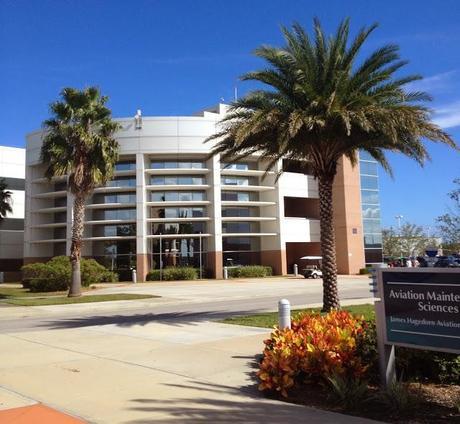
ERAU is probably best known for it's Aeronautical Science Degree Program. Aspiring professional pilots choose this degree as it touches on everything a commercial pilot should need to know, so they are more prepared by the time they get hired:
The Air Traffic Management program is one of the most advanced and highly acclaimed ATC programs anywhere in the country. I was shown around the 3 labs they have for ATC (TRACON, Tower, and En-Route) by the director of the program. I was very impressed with entire program they have set up. It directly mimics the actual ATC set-ups, using the same build plans. In one room, student "pilots" "control" aircraft and communicate with people training in the TRACON room. This is an interesting setup as the fake pilots can give the controllers a hard time, by missing instructions, making directional mistakes etc.
I'm personally not interested in ATC for a degree, but I think understanding the other side of communications is critical to understand what the controllers are going through. They have a program at ERAU called "ATC for Pilots," which helps pilots understand some basics of Air Traffic Control, so that they'll have better communication skills while on the job. That is a course I'd definitely be interested in!
Watch this video to get a good sense of what each ATC lab has to offer, I think it's pretty incredible!
The ERAU ATC Program was even featured on CNN! Check out this youtube video of the coverage (sorry for the bad quality, it was the only one uploaded):
The Meteorology Degree Program Video:
Advanced Simulation Center
The Advanced Simulation Center is adjacent to the College of Aviation building and contains the most advanced ab-initio aircraft simulation on the planet. The center is equipped with aircraft-specific Cessna 172 and Diamond DA-42L (twin engine) Flight Training Devices (FTDs). An interesting fact about the Cessna 172 simulators is that the bodies of the FTDs are actual Cessna 172 aircraft frames, which have been cut to fit as a simulator. There are also 2 Canadair Regional Jet (CRJ-200) Simulators, one a stationary FTD, and one a full-motion class D FTD. The school utilizes these simulators due to new Federal Aviation laws requiring those who apply for reduced ATP minimums (a great perk of ERAU), to have full motion simulator time.
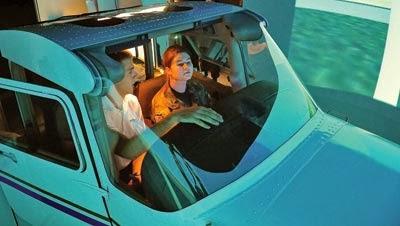

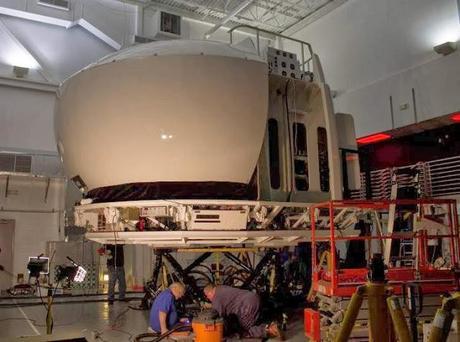
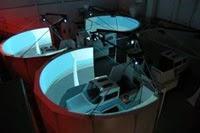
Fleet Maintenance Hanger
Embry-Riddle is known for the quality and safety of all of it's aircraft. With a fleet of over 88 aircraft, piloted often by teenage pilots in training, the maintenance department has quite a job on it's hands. ERAU often talks about how they "fly nothing but perfect airplanes." I didn't really get a feel for this until the actual campus visit. With their massive maintenance hanger and mechanical crew, the aircraft are extremely well maintained at the school. When I fly out of my local FBO and send a rented plane in for a check up, due to some strange vibrations, etc, I rarely get to see what exactly they're working on to fix the problem. When you're a student pilot at ERAU and notice a problem, they'll take the plane into the hanger and uncover the engine, to show the student exactly what's wrong with the aircraft. Every pilot needs to understand some basics mechanics to safely fly, this mechanical-oriented environment is fostered at Embry-Riddle.
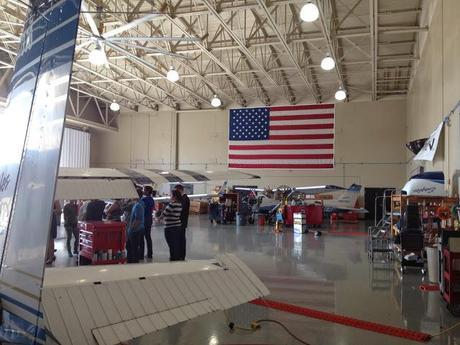
Aviation Maintenance Science (and adjacent hangers)
"At the heart of every flight of every commercial, private or military aircraft is the work of the professional aviation maintenance expert. Without the devotion of these very special people, the air travel system would cease to function. The demand for degreed aircraft maintenance specialists in the aviation/aerospace world has never been greater than it is today. The Aviation Maintenance Science (AMS) program at Embry-Riddle produces these aviation professionals- the best in the world."
Something that many people don't know about the AMS program at ERAU is that they have many fully-operable aircraft, including two jets. There is an ex-USAF C-21A Learjet in addition to a recently donated Gulfstream III. Both are fully functional, but very expensive to fly. Do to this, the AMS department utilizes the aircraft for engine tests, checklists, etc.
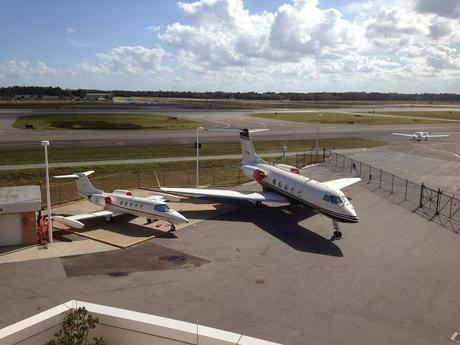
As you can see in the video below, it was pretty difficult to move the new Gulfstream to it's resting place on the ramp!:
In addition to the two jets, ERAU AMS has a very diverse fleet of aircraft that the students work on. You can see some of these aircraft, some in the AMS hanger, below:
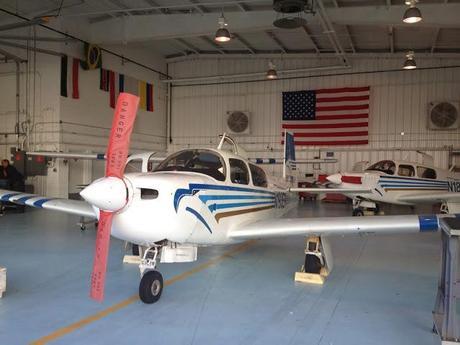

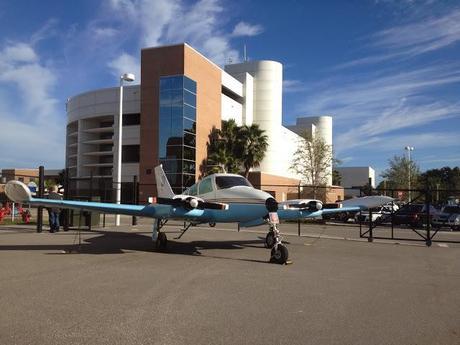
As you can see, we had a very busy "day two" around the ERAU Daytona campus! The next and final article of three from this visit will be about the observation flight I took in an ERAU Cessna 172. In addition, I will detail the Embry-Riddle Flight Training Department and related facilities.
Thanks for reading and watching!
-Swayne MartinTwitter: @MartinsAviation
